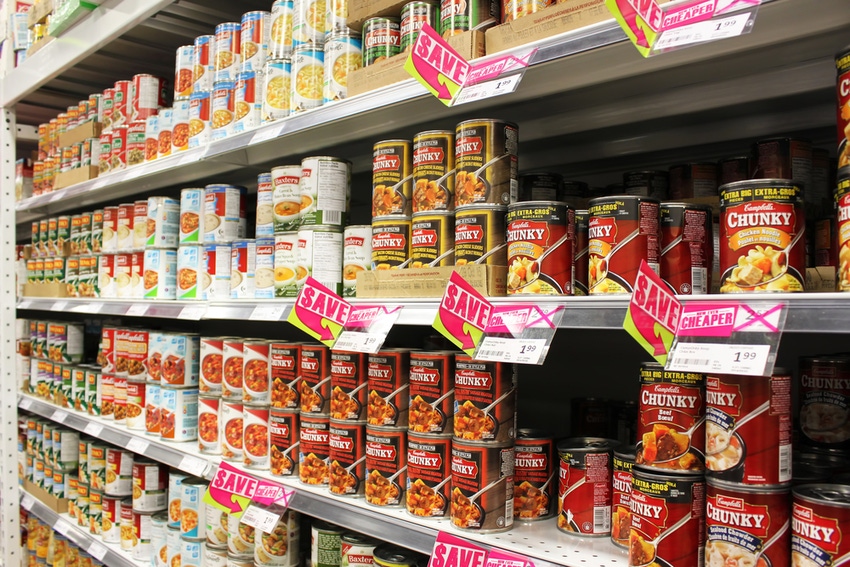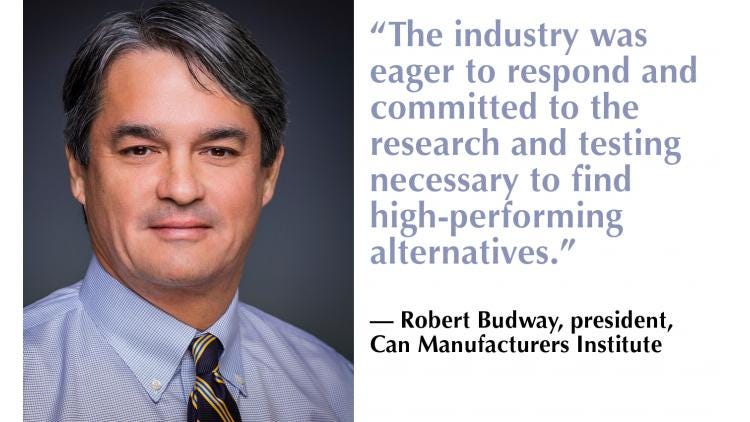Most food cans no longer use BPA in their linings

At least 90% of today’s food cans have replaced linings that previously contained the controversial chemical bisphenol-A (BPA), according to the Can Manufacturers Institute. This is in reaction to market demands for more options in food safety.
Robert Budway, president of the Can Manufacturers Institute, says, “Can makers and can lining companies take very seriously our responsibility to provide safe, quality packaging that consumers trust. Safety is our number one priority and we’re proud to contribute to a healthy, affordable food supply in a way that reduces food waste and respects the environment.”
Food can linings now are typically made from acrylic and polyester. And all new materials are extensively tested and are cleared by regulatory agencies before being sold in the market. Linings are necessary to prevent the can from corroding, provide a barrier to bacteria and maintain food quality.
As with any packaging material, though, trace levels can migrate into the food contained within, which is why there were health concerns about BPA. Despite reassurances about the safety of BPA from the Food and Drug Administration, some research shows that even trace amounts of BPA might cause problems with reproductive, neurological and immune systems in humans and animals. [Click here to see the History of BPA.]
The CMI stresses the remarkable safety record of canned foods: “More than 3,000 people die and more than 40,000 are hospitalized from foodborne illnesses every year, yet there has not been a single reported incidence of foodborne illness from the failure of metal packaging in more than 40 years and the consumption of trillions of cans of food.”
Budway answers Packaging Digest’s questions about the development of new food can linings:
What is the source of the data that more than 90% of food cans have next-generation linings?
Budway: The Can Manufacturers Institute surveyed the industry, including can makers and can lining companies, to determine this percentage. We believe the percentage is likely somewhat higher than 90, but we erred on the side of caution so as to avoid overstating the progress made.
Why does this percentage continue to increase?
Budway: This percentage is increasing because when consumers made clear their preference to move away from BPA, the industry was eager to respond and committed to the research and testing necessary to find high-performing alternatives. Continual research is helping the industry innovate and find new options.

Have all these next-gen linings eliminated BPA?
Budway: Yes, all of the new linings are non-BPA.
What do you estimate the cost has been to can manufacturers to develop these new linings? How are those costs being handled? Are they being passed on to customers, absorbed, integrated into R&D budgets, something else?
Budway: It would be difficult to calculate the cost to develop these new linings because each company has invested extensively for years in the research and testing necessary to develop new linings. The cost is absorbed as part of doing business in an industry committed to being responsive to consumers and laser-focused on ensuring safety.
How do next-generation linings help companies meet sustainability goals?
Budway: Canned foods help to significantly offset food waste, which is the largest component of the landfill stream. It’s estimated that Americans waste 15% to 20% of the fresh fruits and vegetables they purchase every year. Not only do canned foods last longer, the trimmings, such as cores and peels, are used to feed livestock and create compost for healthier soil.
About the Author(s)
You May Also Like




